|
64. Polyommatus dorylas (Denis & Schiffermüller, 1775) / Turquoise blue / Lycaenidae – Polyommatinae
NL: turkooisblauwtje / D: Steinkleebläuling, Wundklee-Bläuling / F: argus turquoise, l’azuré du mélot
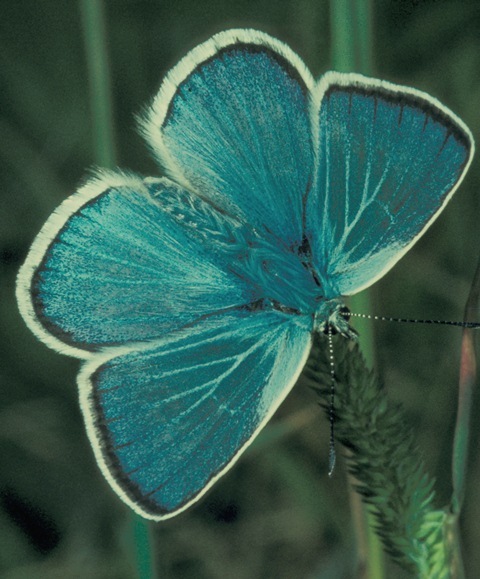 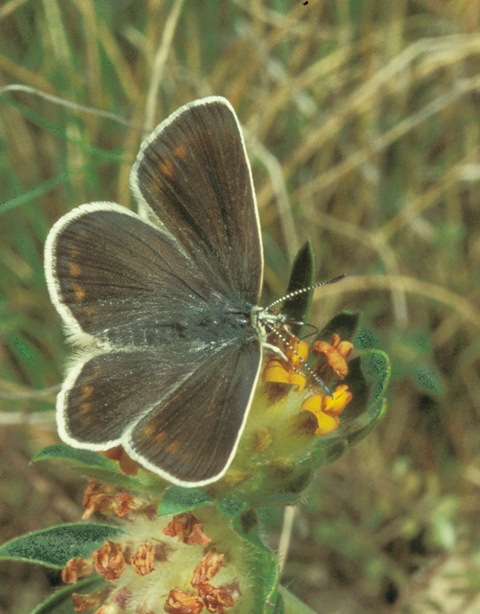 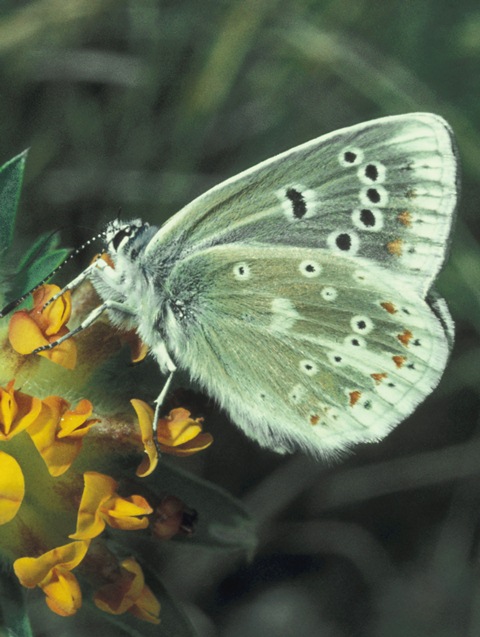 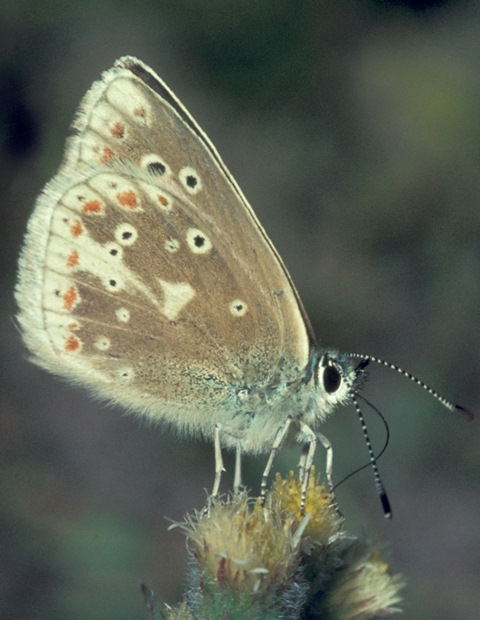
Photographs: Frits Bink ©.
Small, wing length male 15 (14-16) mm, female 14 (13-14) mm. Disappeared from the Benelux, where up to 1957 it had occurred in a few places in the south of Luxemburg and Wallonia on scree with sparse vegetation.
The butterfly is on the wing from mid-June until late-July. It is known from sub-continental to mild continental climates, amplitude 8 to 13. Required heat sum 600°d and maximum tolerated 1800°d, corresponding climate windows 22 and 35 weeks.
The occurrence of this species in the Benelux was probably related to the human activities of mining and sheep breeding, because the steppe-like vegetation is not natural under the local climatic conditions.
Ecological characteristics
Behaviour over time
Overwintering: small larva in second instar in litter layer.
Reproduction: oviposition starts after 7-9 days when the body contains 40-60 eggs, estimated potential production 2.6 times as much.
Larval feeding periods: in summer 40 (35-46) days from end-July until end-September and in next spring 70 (60-79) days from end-April until mid-July.
Generations: one, in south Europe a partial a second.
Spreading of risk: not observed.
Life cycle: egg 10 (8-12) days, larva 46 weeks, pupa 22 (12-31) days.
Life span of adult: long, 4 weeks.
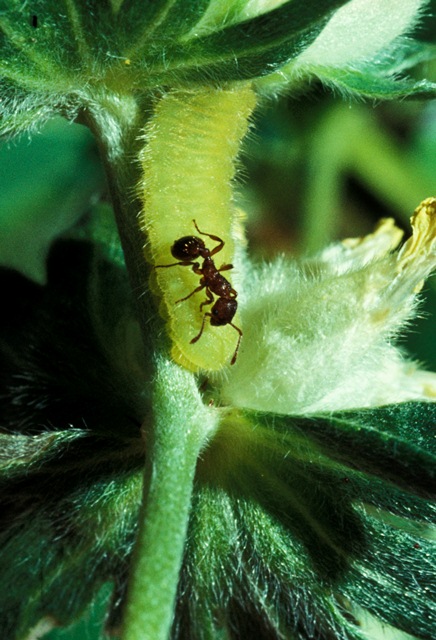 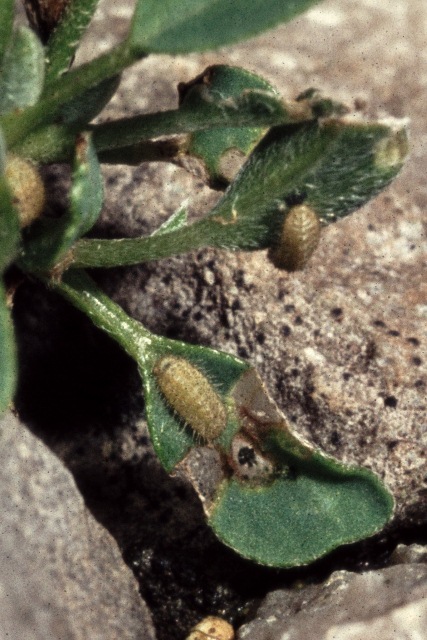
Photographs: Frits Bink ©.
Behaviour in space
From stay-at-home to migrant: stay-at-home, spatial requirement modest.
Finding a mate: male patrols and perches.
Orientation in the landscape: open and stony landscape with short vegetation and bare ground.
Oviposition: on thick leaves of small plants.
Defence
Threats from other organisms: the larva protected by ants.
Myrmecophily: strong, full array of ant-attracting and appeasing organs, at least in the fully grown stage almost permanently attended by ants.
Threats from the environment: endure heat and drought very well.
Feeding habits
Adult: nectar, all kind of flowers.
Larva: young larva in summer mines into thick leaves, in early summer when the larva has become bright green in colour, on shoot and flower bud.
Larval foodplants
Plant species: Fabaceae, Anthyllis vulneraria.
Journal
Rearing experiments based on specimens from Stenåsa, Öland, Sweden:
15 August 1983: female captured.
28 August: larvae already at end of first instar.
29 September: no larvae seen, all in diapause.
Overwintering outdoors.
13 March 84: pot taken indoors.
17 March: larvae ate upperside of the leaf or mined.
24 March: 2 larvae moulted L2-3.
10 April: larvae 6 mm in length, third instar?
20 April: 2 larvae in L4, yellowish in colour.
29 April: biggest larvae middle or end fourth instar, one in flower head.
2 May: some fed on flower heads, other continued to feed on thick and fleshy leaves.
4 May: 5 fully grown larvae, 4 feeding on flower heads, one still eating a leaf.
12 May: first larvae pupated.
15 May: prepupae observed, one in middle of final instar. 21 May: two pupae.
12 June: two adults appeared.
18 June: female hatched.
23 June: last pupa hatched, female.
Table 64-1. Results of dissections

Table 64-2. Collection and observation localities
F, Lorraine, Rupt devant Saint-Mihiel, 280 m, 48° 53’ 01”N – 5° 24’ 10”E; 28,June 2006.
S, Gotland, Buttle 57° 25’ 09”N – 18° 34’ 38”E; 19 July 1982, 16 July 2004.
S, Gotland, Lickershamn 57° 51’05”N – 18° 37’ 46”E; 17 July 2004.
S, Gotland, Maskmyr 56° 56 20”N – 18° 12’ 20”E; 25 June 2004.
S, Gotland, Russväter 57° 23 29”N – 18° 43’ 36”E; 16 July 2004.
S, Gotland, Stygmyr 57° 50’ 10”N – 18° 38’ 32”E; 18 July 2004.
S, Öland, Stenåsa 56° 32’ 44”N – 16° 36’ 43”E; 15 August 1983.
S, Öland, Eketorp borg 56° 17’ 43”N – 16° 29’ 10”E; 23 July 2004.
Fig. 64-1. Polyommatus dorylas, phenogram adapted from Ebert & Rennwald 1991b: 373.
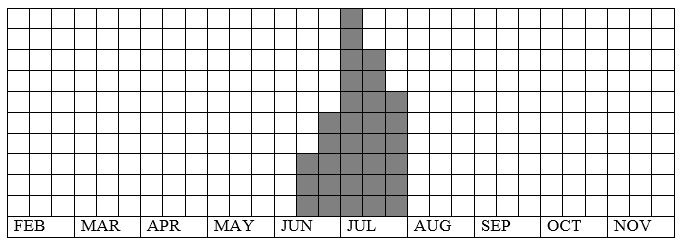
Fig. 64-2. Polyommatus dorylas, habitat characteristics.
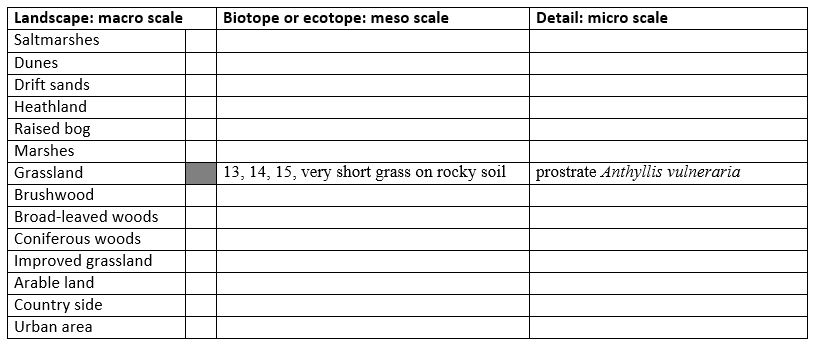
Fig. 64-3. Polyommatus dorylas, climate matrix, heat-sums 600 - 1800°d.
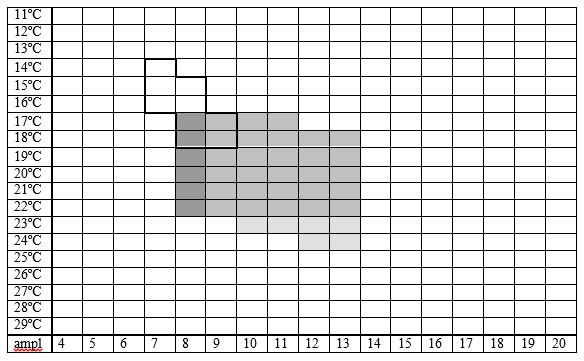
|











